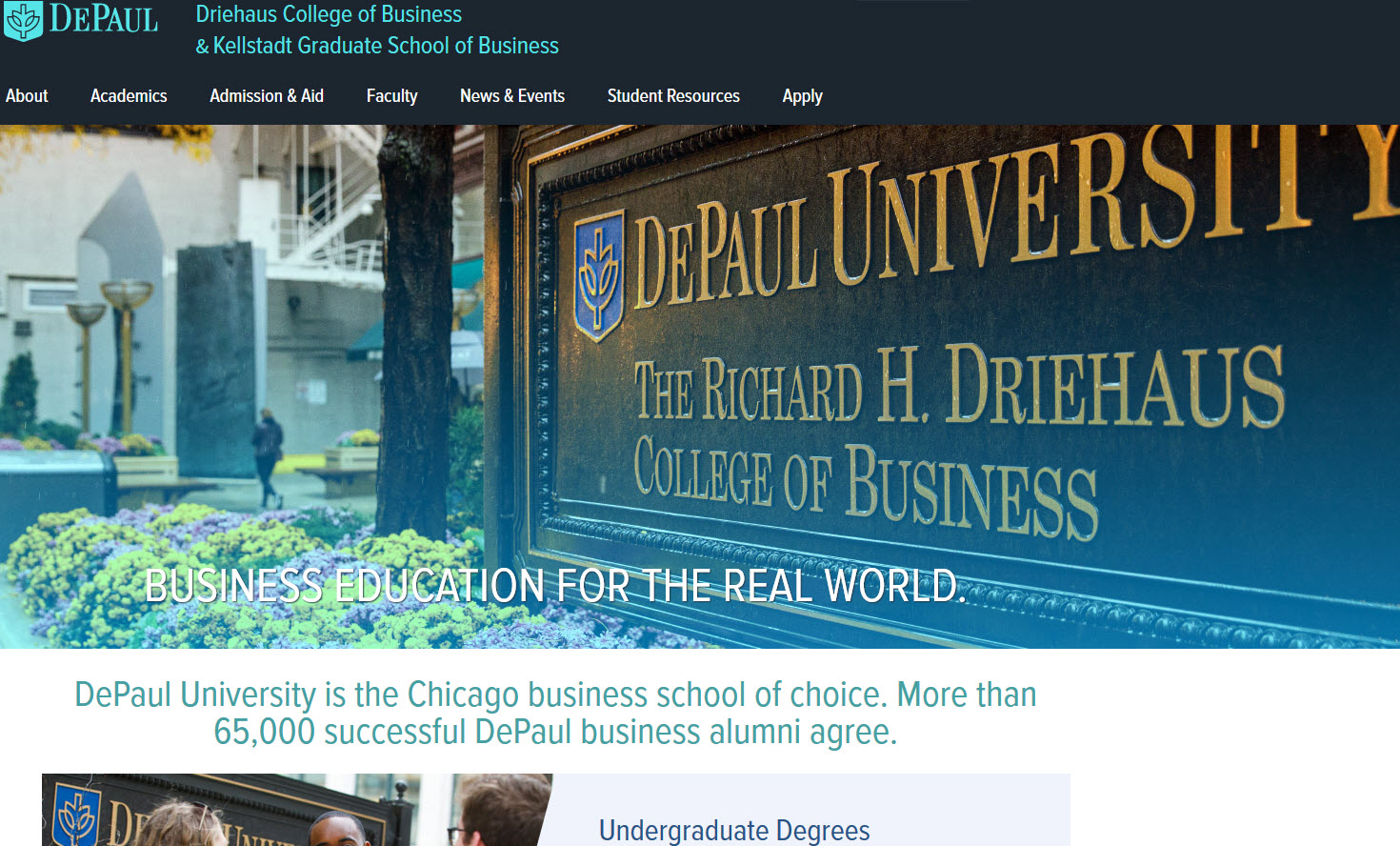Web marketing is critical to meeting the university’s enrollment goals, with DePaul’s website the primary source for generating prospective student inquiries. To increase the number of inquiries in support of enrollment goals, especially for graduate programs, EMM’s University Marketing undertook an ambitious “college website refresh” project this fall to overhaul the design and content on several of DePaul’s college sites by June 30, 2018. The first of the redesigned sites, the Driehaus College of Business, successfully launched on January 17, 2018.

Developing online inquiries involves two parts: Generating website visits by prospective students and motivating them to submit an online inquiry form, which is what triggers DePaul’s recruitment activities. While simple in concept, effectively executing these steps is a complex process. It requires rigorous analysis and dedicated resources to implement solutions that account for evolving consumer preferences and rapidly changing technology.
University Marketing identified a need to improve the effectiveness of the college websites, explains Sharon Miller, director of Web Communications within the marketing department, and EMM secured funding for the project.
“Successful websites integrate visual design, user experience design and content,” Miller says. “The colleges manage their own websites, but we collaborate with them in a consultative role. This project gives us an unprecedented opportunity to leverage our expertise and resources to improve how well these sites function in supporting enrollment goals—and to complete this comprehensive refresh quickly.”
While University Marketing is managing the college website refresh project, the scale and tight timeline required engaging an outside agency, Mightybytes, to help execute it. The project comprises two core components: search engine optimization (commonly referred to as SEO) and content redesign. While addressing distinct objectives, the two components play an interrelated role in prospect generation.
Since sixty-one percent of all traffic to the college websites comes from unpaid, organic rankings in search engine results, SEO is largely responsible for delivering these visitors. The term SEO refers to how well a site is created to perform in a web search, with the goal of having a website come up first in the search for a specific term. For instance, DePaul’s Kellstadt Graduate School of Business (KGSB) would ideally be the first site returned when someone enters “MBA Chicago” in a search engine.
While DePaul’s sites are structured to perform well in searches, the refresh project takes SEO to another level, Miller explains.
“We set up the existing website templates and architecture so that sites already meet multiple SEO best practices such as proper naming conventions in URLs, using https rather than http, and html title tags, to name a few. The work on the current refresh project takes our SEO to another level. Mightybytes analyzes each site for 28 factors that are designed to improve that site’s position in search results.”
User testing helped identify areas for content redesign. This research, combined with DePaul’s internal analytics on traffic patterns, helped guide the course of the second component of the refresh project.
“The goal of the content redesign is to make it more compelling to prospective students,” states Miller. “We want to engage them and efficiently bring them in through our inquiry forms to get them into the recruitment communications stream.”
Maximizing the impact of the design requires skilled writing coupled with content strategy that is informed by metrics.
“Research was critical to defining high-value content so we could really hone in on what users want and expect,” Miller explains. “We’re including larger images and more ‘chunkable’ content. The graduate program description pages are being rewritten in ways consistent with the university brand and the positioning strategies for the colleges. We are incorporating more keywords into the writing to strengthen our SEO. The resulting sites will be dramatically different and have superior results.”
Research Provides Critical Insights
While the college sites’ stunning visual makeovers will be what captures attention, the foundation of the project and the basis for the upgrades is rigorous research and analysis. Many data points provided the evidence to guide the changes.
A study last spring reviewed traffic on the college websites from April 2016 through April 2017. Two results stood out immediately: Prospective students are most interested in academic content and least interested in feature/news content.
“While it seems intuitive that academic programs would be most popular, the magnitude of the difference is significant,” Miller states. “The difference in traffic to the academic subsite and the next closest subsite for any given college was between 25 and 74 percentage points. This really helped us define our strategy and prioritize content for the refresh.”
Focus group testing conducted in November 2017 provided additional key insights. Participants went through several card-sorting activities to help prioritize content. They were also given the opportunity to comment on formatting (i.e., bullet points compared with paragraphs) and content type (i.e., video, infographics, testimonials, etc.).
The cumulative knowledge laid the groundwork for the design and content changes eventually implemented. To ensure the sites are working effectively, they will undergo additional analysis going forward.
“We will make minor tweaks as needed while we gather performance data over three to six months after each site launches,” says Miller. “Then we can evaluate how the sites are doing and make strategy changes as needed.”
LAS and Communication are the next college sites being refreshed and are expected to launch in March 2018. CSH and Education are also slated to launch by June 30, 2018.